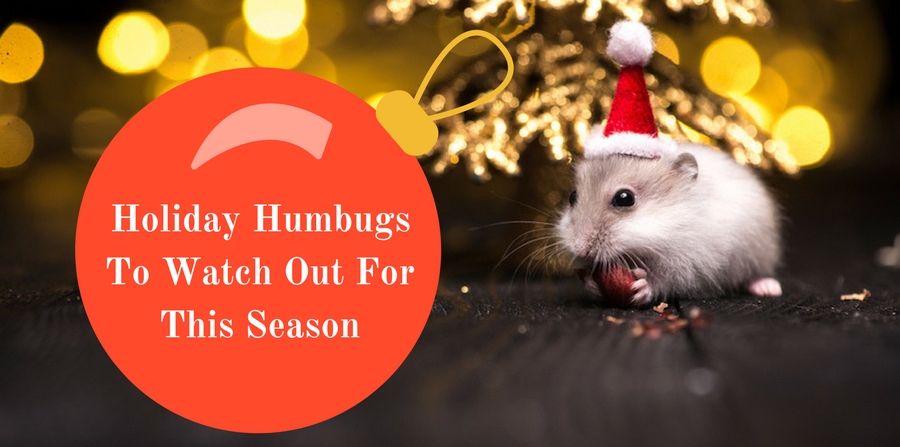The Holidays are a unique time of year. You travel to places you don’t usually visit, do things you don’t usually do, with people you don’t usually see. All this new activity can feel refreshing and exciting, but it can also come with new concerns and stresses.
Yes, there are the obvious Holiday stressors–family fights, obnoxious in-laws, cramped living quarters–but there are less-obvious concerns to keep in mind, too. Chief among them: pests. Believe it or not, even the most wonderful time of year isn’t safe from everyone’s least favorite (well, almost everyone’s least favorite) house guests. Lots of pests take the hustle and bustle of the Holidays as the perfect opportunity to invite themselves over.
Here’s how they do it, and how to keep them out:
Bed Bugs
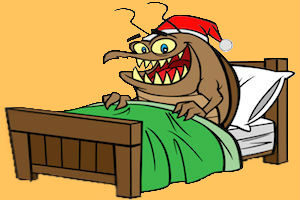 Bed bugs hide in dark, confined places and remain perfectly still for hours on end. These dark, confined spaces aren’t just beds, either. Bed bugs often hide in suitcase, bags, and other common travel gear. If travelers fail to notice the bed bugs when they pack, then the pest can easily spread to each location visited. Your mom brings her own pillow over because yours are “too hard”, and all of a sudden you have bed bugs in your home for the Holidays. Thanks a lot, Karen.
Bed bugs hide in dark, confined places and remain perfectly still for hours on end. These dark, confined spaces aren’t just beds, either. Bed bugs often hide in suitcase, bags, and other common travel gear. If travelers fail to notice the bed bugs when they pack, then the pest can easily spread to each location visited. Your mom brings her own pillow over because yours are “too hard”, and all of a sudden you have bed bugs in your home for the Holidays. Thanks a lot, Karen.
The best way to prevent bed bugs is to carefully inspect stuff moving into and out of your home. Run clothing, sheets, bags, and other cloth items through the dryer (on the highest heat setting) for about 20 minutes before unpacking them. While you’re away, keep your clothing sealed in plastic travel bags when you’re not wearing it. Keep your travel bags closed tight and elevated anytime you’re not going through them.
Moths
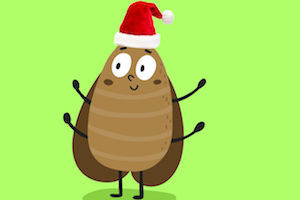 There are two types of common pest moths: pantry-infesting moths and fabric-infesting moths. Unfortunately, both can be a problem during the holiday season. If fabric moths infest cloth decorations, they might be reproducing year-round. When you take your decorations out of storage for the holidays, you unleash them into your home like a tomb raider uncovering an ancient civilization’s curse. Clean all your decorations before you unpack them to save yourself a major headache.
There are two types of common pest moths: pantry-infesting moths and fabric-infesting moths. Unfortunately, both can be a problem during the holiday season. If fabric moths infest cloth decorations, they might be reproducing year-round. When you take your decorations out of storage for the holidays, you unleash them into your home like a tomb raider uncovering an ancient civilization’s curse. Clean all your decorations before you unpack them to save yourself a major headache.
Pantry-infesting moths are a little easier to figure out. These pests love sugary carbs. Holiday baking leads to big holiday baking messes. Big holiday baking messes lead to spilled flour, misplaced sugar, and excess crumbs. Accessible food… leads to moths all-too happy to eat that food. Clean your kitchen and keep your pantry tidy to ensure that Santa is the only home invader eating the cookies you leave out this Holiday season.
Spiders
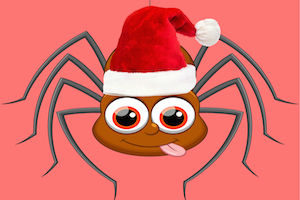 Remember when we covered how spiders survive winter last month? Well, it turns out Christmas trees are a great place for spiders to build their aforementioned winter shelters. They make their way through pine branches until they find a sturdy spot. Then, they build a casing of webbing for themselves using the branches as support.
Remember when we covered how spiders survive winter last month? Well, it turns out Christmas trees are a great place for spiders to build their aforementioned winter shelters. They make their way through pine branches until they find a sturdy spot. Then, they build a casing of webbing for themselves using the branches as support.
When spiders start to feel warm, they make their way out of their shelters to start eating and mating. Imagine a spider’s surprise when burrow out of their webs, only to find they’ve been transported into a person’s home? Inspect your Christmas tree carefully before you bring it inside. Consider using a handheld shopvac to vacuum up any cobwebs hanging near the tree’s trunk. Spiders can build their webs just about anywhere, so be thorough.
Mice
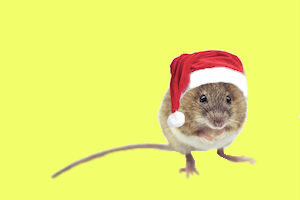 Unfortunately, “not a creature was stirring–not even a mouse” is not always true of the night before Christmas. The Holiday season tends to be prime time for rodential raiders. Mice have an extremely powerful sense of smell. Not only can they sense food through tiny cracks in walls, they can sense specific information about that food. If they “smell” food that’s ripe for stealing, you’ll wind up with more house guests than you can handle!
Unfortunately, “not a creature was stirring–not even a mouse” is not always true of the night before Christmas. The Holiday season tends to be prime time for rodential raiders. Mice have an extremely powerful sense of smell. Not only can they sense food through tiny cracks in walls, they can sense specific information about that food. If they “smell” food that’s ripe for stealing, you’ll wind up with more house guests than you can handle!
Mice are attracted to food they can steal, moisture they can access when they need it, and warmth. They sneak through small cracks in the wall in pursue of food smells. There are ways to ward them off, however. First, store all your food in airtight containers when you’re not eating it. Next, check your plumbing for leaks mice could use as tiny water fountains. Finally, update weatherproofing, particularly around doors and windows. Mice are tenacious and stubborn, but they’re not Santa Claus; they can’t magically access your home.
Stressful as they can be, the holidays are ultimately supposed to be a joyful, refreshing time of year. Pests are neither joy-inducing nor refreshing, so they’ve got no business bugging you this Holiday season.
If you need some help kick your pests to the curb this winter, give Griffin Pest Solutions a call any time. We may not be Santa, but we can spread a different kind of Holiday cheer. A distinctly more John McClane type of holiday cheer. Now you have no pests. Ho Ho Ho.

